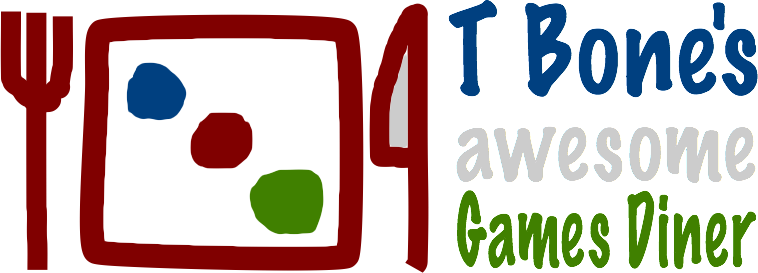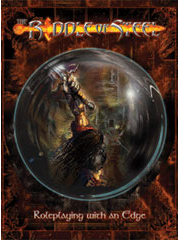23Dinosaurs may not have been as heavy as previously thought. Those are the words of scientists who found flaws in the models used to estimate weight:
“Palaeontologists have for 25 years used a statistical model to estimate the body weight of giant dinosaurs and other extraordinarily large extinct animals,” said Gary Packard, from Colorado State University, whose research will appear in the Zoological Society of London’s Journal of Zoology this week.
“We have found that the statistical model is seriously flawed and the giant dinosaurs probably were only about half as heavy as is generally believed.”
In other words, dinosaurs are just as big – long and tall, that is – as the fossils have always told us, but the flesh on those bones may have been far less bulky than thought. To make that distinction in movie terms, an Allosaur at the cinema would cheer the speedy new Godzilla over the lumbering old one as a better depiction of saurian kind. (Well, as a vastly oversized saurian, anyway.)
This is welcome news to me, as massive weight has been the bane of GULLIVER‘s attempts to apply “natural encumbrance” rules to dino designs. I’ve had to cheerfully admit to small cheats (if tweaking a design to get desired effects can be called “cheating”), as in this report on dinosaur running speeds (see center topic). As mentioned there, I tacked unusual amounts of Extra Encumbrance onto GULLIVER for 3e’s T Rex “model” to keep movement appropriately high for game play. (There’s just something dramatically missing in “Oh dear, it’s another Rex coming. Let us finish our smokes and stroll to safety.”) Not that it’s wrong to use as much Extra Encumbrance as desired – any amount is an arbitrary level of an imaginary trait slapped on to a bunch of other fictional game stats – but it would be nice if such added tweaks weren’t needed.
The new findings suggest big weight revisions for the largest dinos, such as a halving of Apatosaurus weight to 18 tons. Unfortunately, news articles on the topic don’t go into any detail of the old and new models used to calculate weight, and the actual paper (Allometric equations for predicting body mass of dinosaurs) requires purchase. And while several articles suggested a leaner, lither T Rex, none that I read suggest what its revised weight might be. The article linked in my first sentence quotes a biologist saying “The best we can do is put the weight at six to eight tons for a typical [T Rex] adult”, but the context makes it unclear whether this refers to revised or old weight; I have to guess the latter, as it’s in line with all the old estimates I’ve seen (including the 6-ton weight and slow Move 9 from the 2007 dino running speed article).
So who knows. But just for fun, here’s a revised T Rex design, using a weight of (conjures numbers out of thin air) 10,000 lbs. for a SM +4 T Rex, and just focusing on the performance aspects:
T Rex using GULLIVER for 3e
Original design’s stats: Size +4; Combat ST 90, Load ST 360; DX 13; HT 13; Basic Speed 6.5
Revised stats: Extra Encumbrance x2 (down from x3 in original design); weight 10,000 lbs. (down from 11,500 lbs.)
Revised Land Performance: WSR 27.8 (Medium); MSR 27.8 x 4 = eff MSR 111; Heavy enc; MV 13 (Base 6.5 x 2/5 for enc x 5 for size)
The revised land performance yields the same net encumbrance and Move as the original, but does so using only the rules’ suggested Extra Encumbrance x2 for size, with no additional level. Good! What’s more, this T Rex is right on the cusp of Light encumbrance; drop weight to 9700 lbs., and you get this:
Revised Land Performance: WSR 26.9 (Light); MSR 26.9 x 2.5 = eff MSR 67.4; Medium enc [-30]; MV 19.5 (Base 6.5 x 3/5 for enc x 5 for size)
Now that’s a Move clearly in cinematic Jurassic Park territory. This Rex might be too strong and agile (or, then again, might be just right for your game).
T Rex using GULLIVER Mini for 4e
Let’s assume an athletic base ST 12, add 20% per suggestions for SM and muscular build, and round the result up to 15 for fun. That gets multiplied by 5 (for SM +4). Land performance will use the Power and Mass rules.
Stats: SM +4; ST 75, BL 282; initial DX 13; HT 13; Basic Speed 6.5; weight 10,000 lbs.
Land Performance: PMR = 282 x 10 / 10,000 = 0.282. Result: Agility = -2. Add Agility to DX, and also add Agility x 0.25 to Basic Speed. Revised Basic Speed = (11 + 13)/4 – 0.5 = 5.5. Suggested Move: Look up SM + Agility + 2 = 4 on SM Table: SM +4 = 10 yards, i.e., suggested Move is 10. Buy traits to turn Basic Speed 5.5 into Move 10.
This is clearly a different approach from the 3e rules, though the resulting Move 10 fits perfectly fine among the range of possible speeds suggested here and there for a T Rex. Since the Mini rules, in GURPS fashion, don’t concern themselves with actual encumbrance, you’ll find that their results are influenced much less than the 3e rules by modest changes in weights; it’s a simpler model, and science’s revised dinosaur weights won’t likely have much effect. Still, it’s fun to see what results.
Anyway, it’s all an intensely trivial exercise; there remains nothing wrong with the classic creature design model of “just make up stats that sound good”. But keep up the good work, scientists; any time you want to revise your assumptions to better fit my more detailed models, I’m cool with that. : )




4 Comments
Roguebfl
does the traits inclde enhanced move or simple buying more move?
tbone
I would play it just by the (4e) rules: use whatever combination of Basic Move adjustments (B17) and Enhanced Move (B52) get the desired final Move.
In this case, a single level of Enhanced Move takes the T Rex from Basic Move 5.5 to Move 11 – close enough!
Canageek
If you ever want access to scientific journals let me know: I usually have access to them through my university, and could chop out some exerts, such as the details of the statisitcal model, for you.
tbone
Thank you for the kind offer! I may take you up on it. Not necessarily for biology-related articles; gamingdom seems to share little of my interest in general biophysical simulation. : ( But, once in a while I come across mention of a scientific journal article that touches more directly on combat or weapons or things that excite people, and it’d be great if I could check whether you have access.
If I don’t hear otherwise re contact method, I assume I can get in touch via your Canageek blog. Which, incidentally, has some good gaming stuff. (I like the game ideas here. Dungeons as a televised sport; nice! I’m thinking “Running Man” with Ogres. : )